Do you have a question about the Hobbico NexSTAR mini EP RxR and is the answer not in the manual?
Instructions on how to submit a warranty claim for defective parts or items.
Essential guidelines for safe assembly, operation, and handling of the model aircraft.
Specific requirements for the Mini NexSTAR EP success guarantee in the US and Canada.
Lists suggested radio systems, receivers, batteries, and chargers for the model.
Lists optional tools and supplies that can aid in model assembly and tuning.
Part numbers and descriptions for ordering replacement components for the model.
Steps for installing AA batteries into the transmitter and securing the cover.
Instructions for connecting the vertical fin, horizontal stabilizer, and pushrods to the fuselage.
How to correctly slot and align the vertical fin and horizontal stabilizer in the fuselage.
Adjusting the elevator pushrod clevis to ensure the elevator is in a neutral position.
Adjusting the rudder pushrod clevis to center the rudder.
Securing the tail assembly to the fuselage using self-tapping screws.
Attaching the main landing gear to the fuselage with machine screws.
Mounting the receiver and positioning the antennas for optimal signal reception.
Connecting tail servo leads and ESC to the receiver and Y-harness.
Attaching the Speedbrakes Training Flaps to the underside of the wing panels.
Joining wing panels with a joiner tube and securing them to the fuselage.
Connecting aileron servos and mounting the wing to the fuselage with a wing bolt.
Safety warnings and guidelines for charging and handling LiPo flight batteries.
Steps for preparing the battery and installing it into the aircraft's battery tray.
Required transmitter throttle trim and reversing switch settings for ESC functionality.
Procedures and warnings for connecting the flight battery to the ESC, including voltage considerations.
Step-by-step guide to configure the ESC's adjustable brake function.
How to arm the ESC for motor operation and the safe-start mechanism.
Instructions for mounting the propeller, backplate, and spinner cone onto the motor.
Checking that all control surfaces respond correctly to transmitter stick inputs.
Setting and confirming default control surface throw amounts for optimal flight characteristics.
Procedures for balancing the model by adjusting flight battery position for correct C.G.
Requirements for identifying the model and charging transmitter batteries before flight.
Critical safety guidelines to prevent injury when running the motor and propeller.
Excerpts from the AMA Safety Code covering general model aircraft operation.
Excerpts from the AMA Safety Code pertaining to radio control operation and frequency usage.
A comprehensive checklist of final checks before the first flight of the model.
Verifying radio frequency usage and checking all control surface operations.
Procedures for taxiing the model and adjusting rudder trim for straight ground movement.
Steps for performing a safe takeoff, including throttle and elevator control.
Guidance on maintaining stable flight, trimming the aircraft, and practicing maneuvers.
Techniques for a safe landing, including throttle management and elevator control.
Advice on battery storage, checking screws, and inspecting high-stress areas after flying.
Visual guides for setting elevator, rudder, and aileron control throws.
Instructions on removing flaps to improve high-speed performance and re-trimming.
Guidance on removing wing extensions for enhanced speed and aerobatics.
Listing of available SuperTigre LiPo batteries and necessary adapter cables.
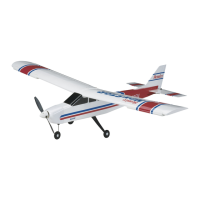
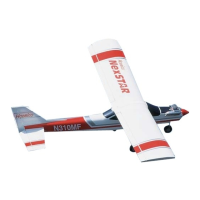
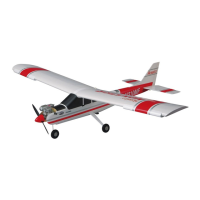
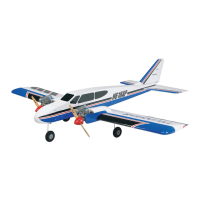
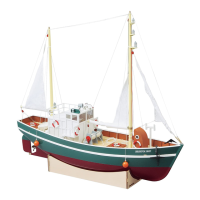
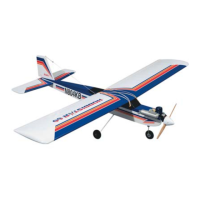
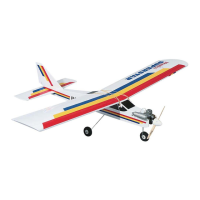
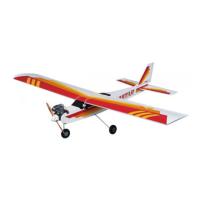
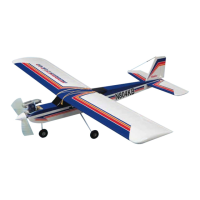
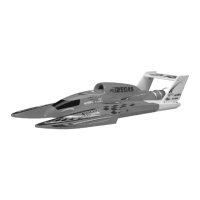
